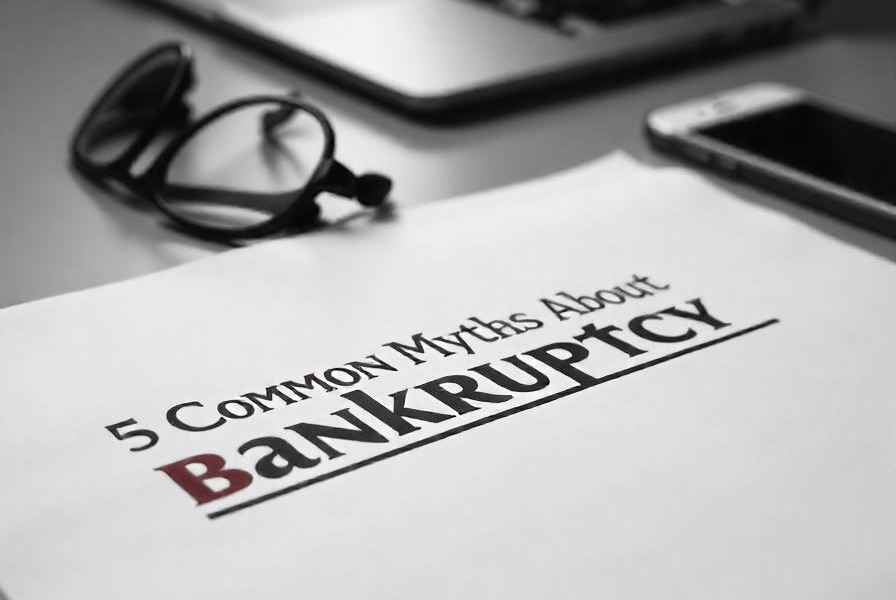Bankruptcy can be a daunting term, often surrounded by misconceptions that create fear and confusion. Whether you’re facing financial difficulties or simply curious about the process, it’s crucial to separate fact from fiction. In this article, we’ll debunk five common myths about bankruptcy and clarify what it truly means for individuals and businesses.

Myth 1: Bankruptcy Means You’ve Failed
Reality: Many people believe that filing for bankruptcy is a sign of failure or poor financial management. In truth, bankruptcy is a legal process designed to provide relief to those overwhelmed by debt. It can be the result of unforeseen circumstances, such as medical emergencies, job loss, or economic downturns, rather than poor choices. Seeking bankruptcy protection can be a strategic decision to regain control over your financial future.
Myth 2: You Will Lose Everything
Reality: One of the biggest fears about bankruptcy is the assumption that you’ll lose all your assets. However, bankruptcy laws provide exemptions that allow individuals to keep essential property. Depending on the type of bankruptcy you file—Chapter 7 or Chapter 13—you may be able to retain your home, car, retirement accounts, and other critical assets. Understanding the exemption laws in your state can help you navigate the process with confidence.
Myth 3: Bankruptcy is Only for Individuals
Reality: While many people associate bankruptcy with personal financial troubles, businesses can also file for bankruptcy. Business bankruptcy allows companies to reorganize their debts and operations, providing a path to financial recovery. Chapter 11 is a common option for businesses, allowing them to restructure while continuing operations. Both individuals and businesses can benefit from bankruptcy protection, depending on their unique circumstances.
Myth 4: Bankruptcy Will Ruin Your Credit Forever
Reality: It’s true that bankruptcy can have a significant impact on your credit score. However, it’s a common misconception that the effects last indefinitely.
A bankruptcy filing typically remains on your credit report for 7 to 10 years, but this does not mean you won’t be able to rebuild your credit afterward. Many individuals successfully restore their credit scores by practicing responsible financial habits, such as making timely payments and reducing debt levels after bankruptcy. In fact, for some, bankruptcy can be a fresh start that ultimately improves their creditworthiness.
Myth 5: You Can Only File for Bankruptcy Once
Reality: Many believe that filing for bankruptcy is a one-time option. In reality, individuals can file for bankruptcy more than once, though there are specific time limits and conditions that apply. For instance, if you file for Chapter 7 bankruptcy, you must wait eight years before filing for Chapter 7 again. However, if you initially filed for Chapter 13, you may be eligible to file for Chapter 7 sooner, after just six years, under certain conditions. Understanding these rules can help you make informed decisions about your financial future.
Conclusion
Bankruptcy can be a complex and intimidating process, but understanding the realities behind common myths can empower you to make informed choices. Whether you’re considering bankruptcy for yourself or your business, it’s essential to consult with a knowledgeable attorney who can guide you through the process and help you explore your options. Remember, bankruptcy is not a mark of failure; it’s a legal tool designed to help you regain control of your financial life and pave the way for a brighter future. If you have questions or need assistance, don’t hesitate to reach out for professional support. You don’t have to face this journey alone.

